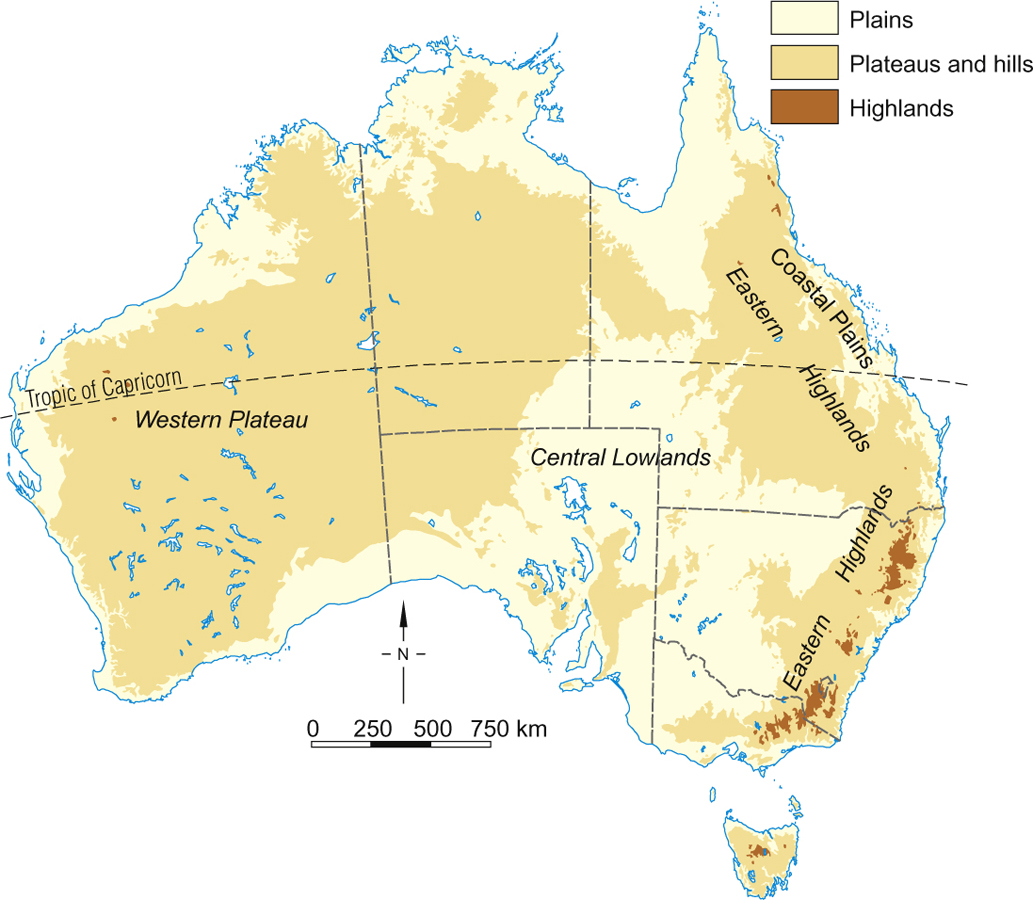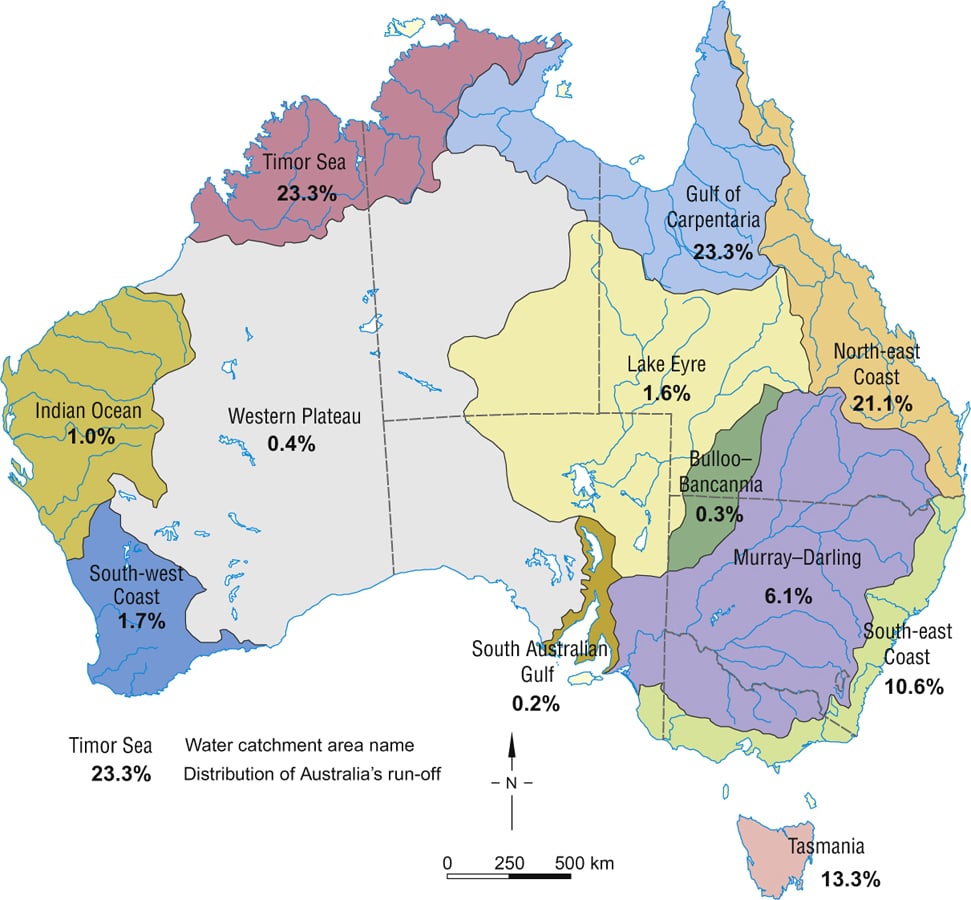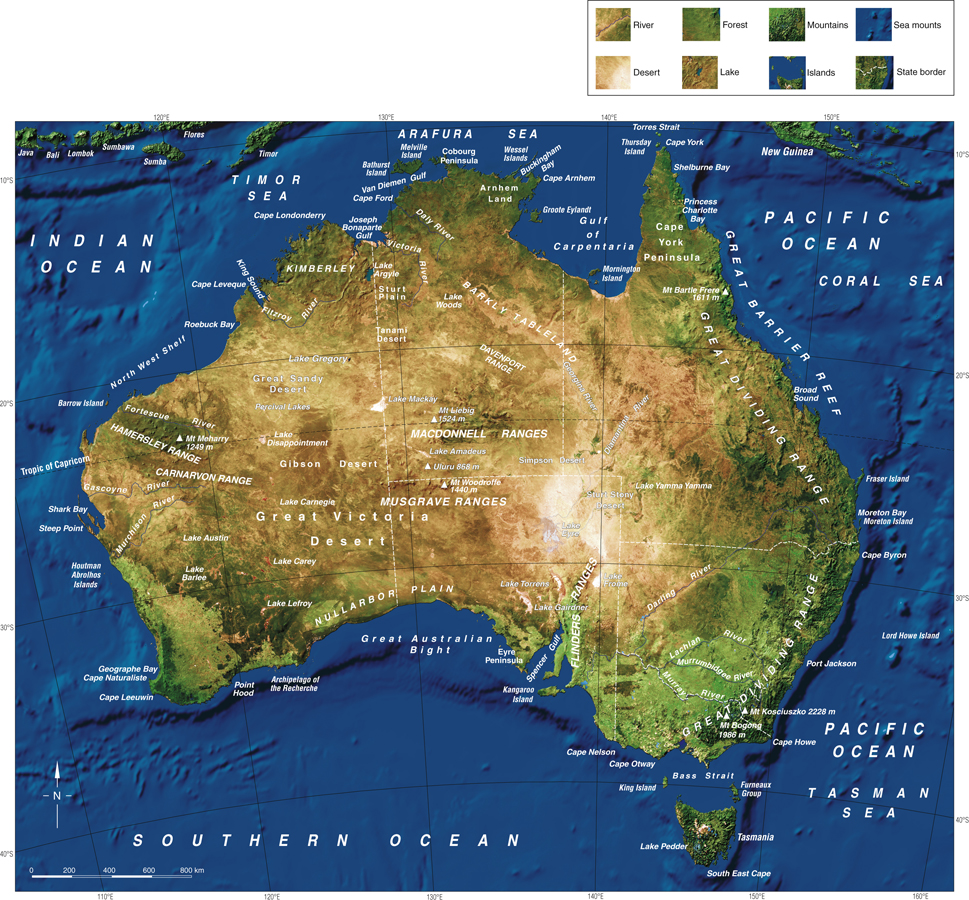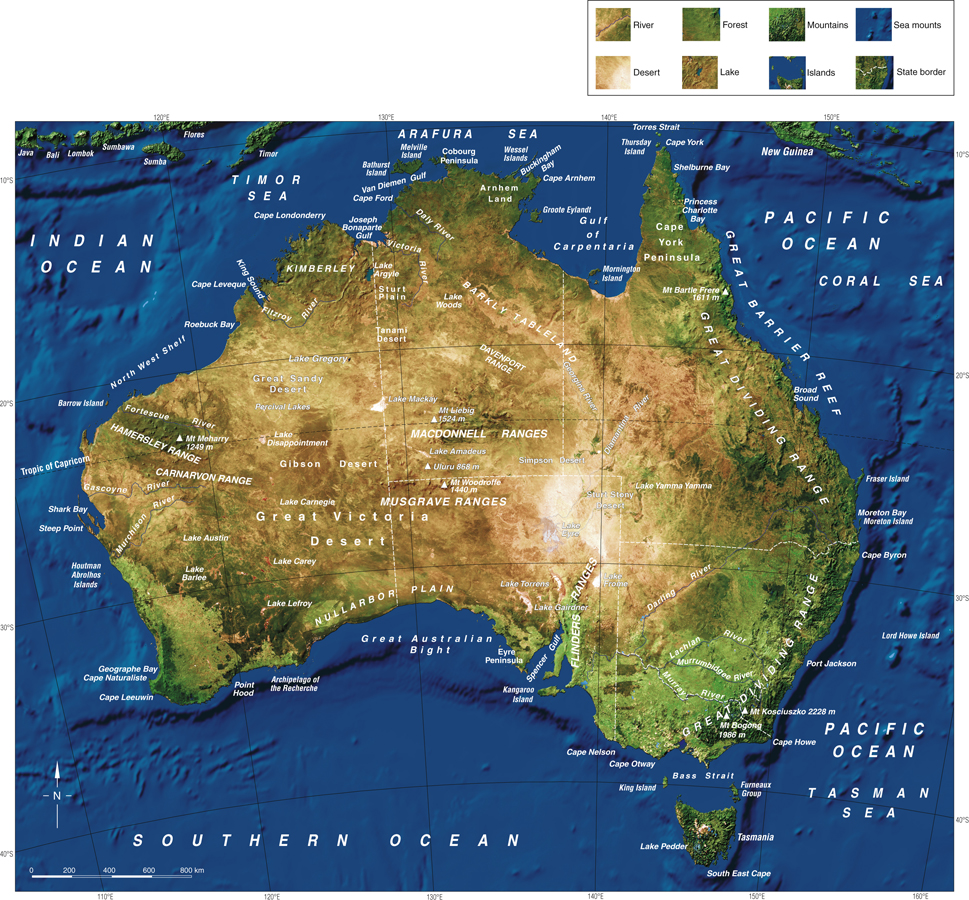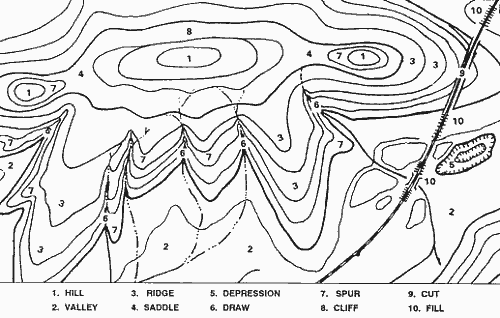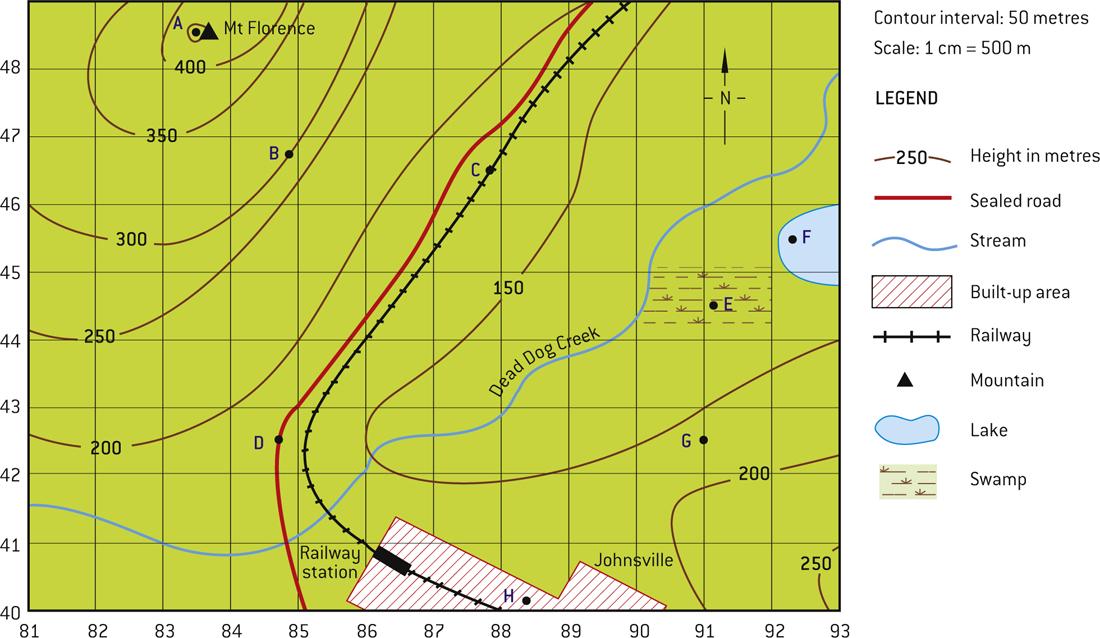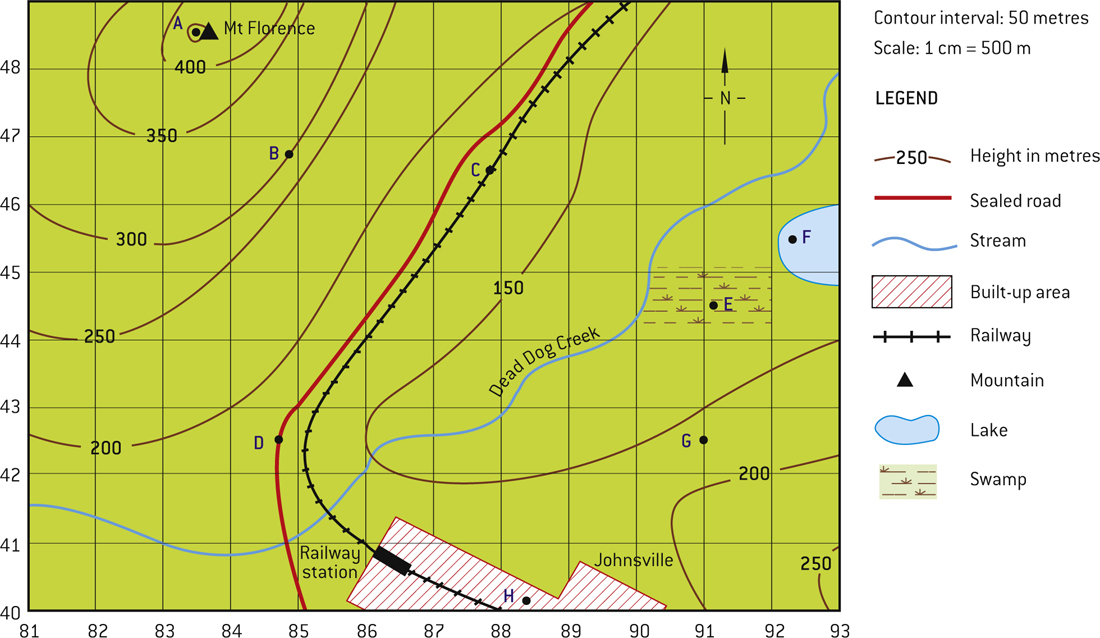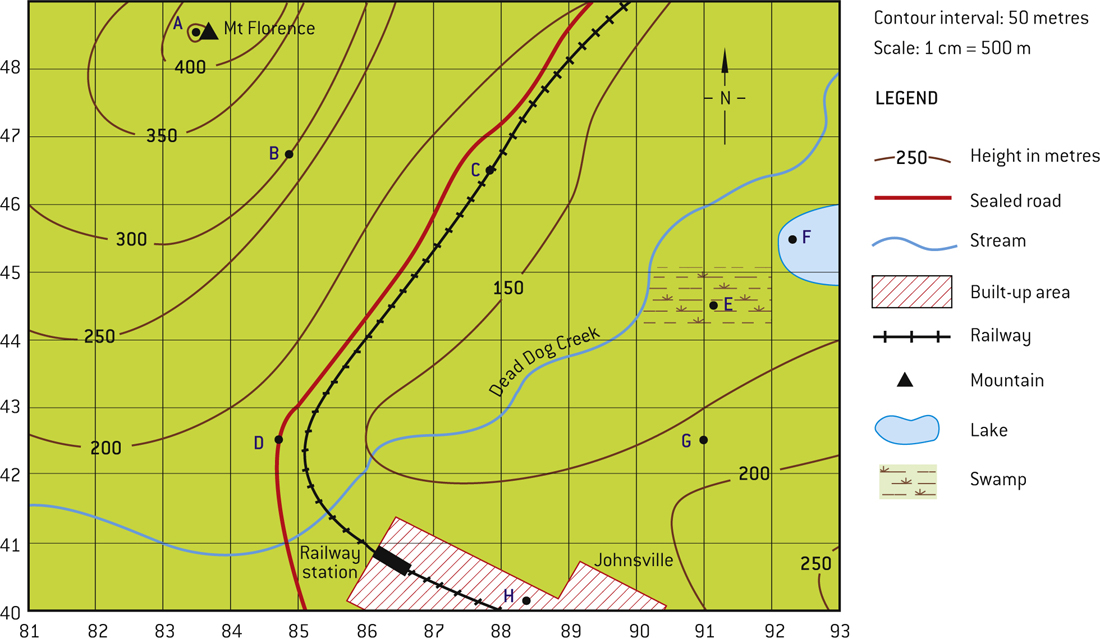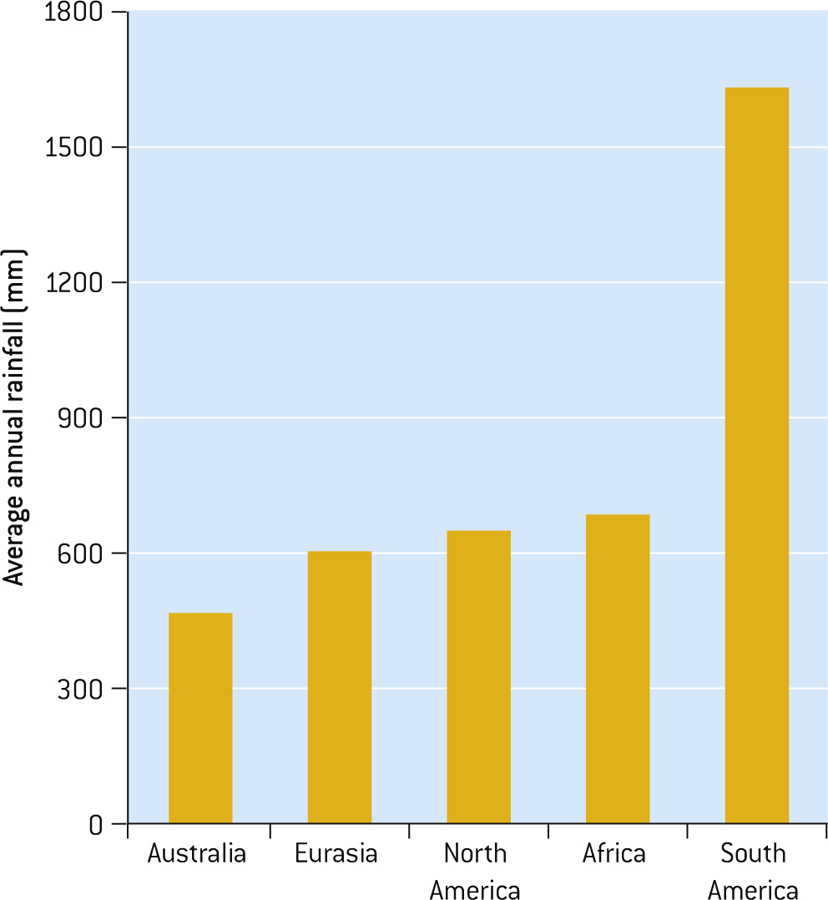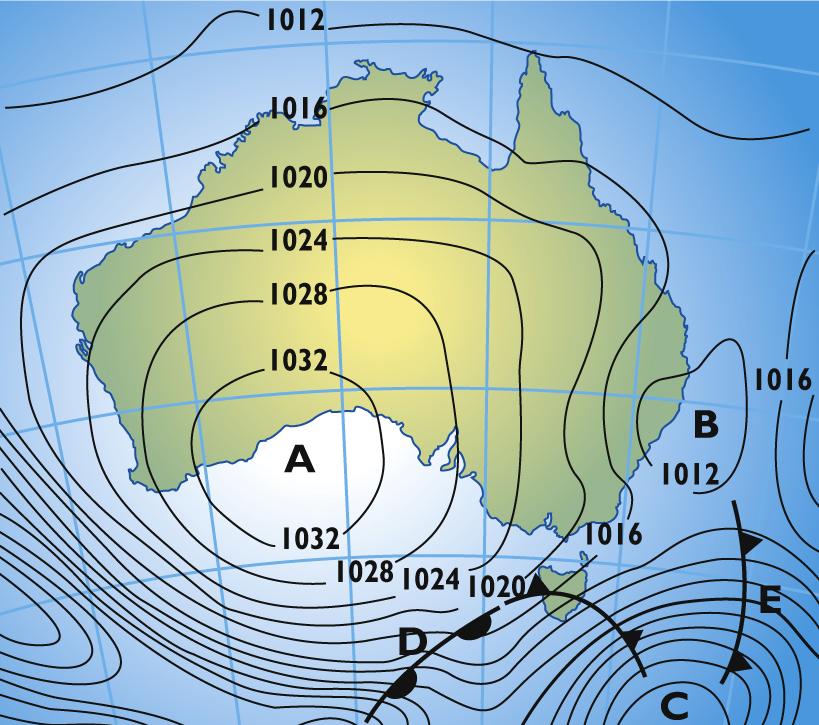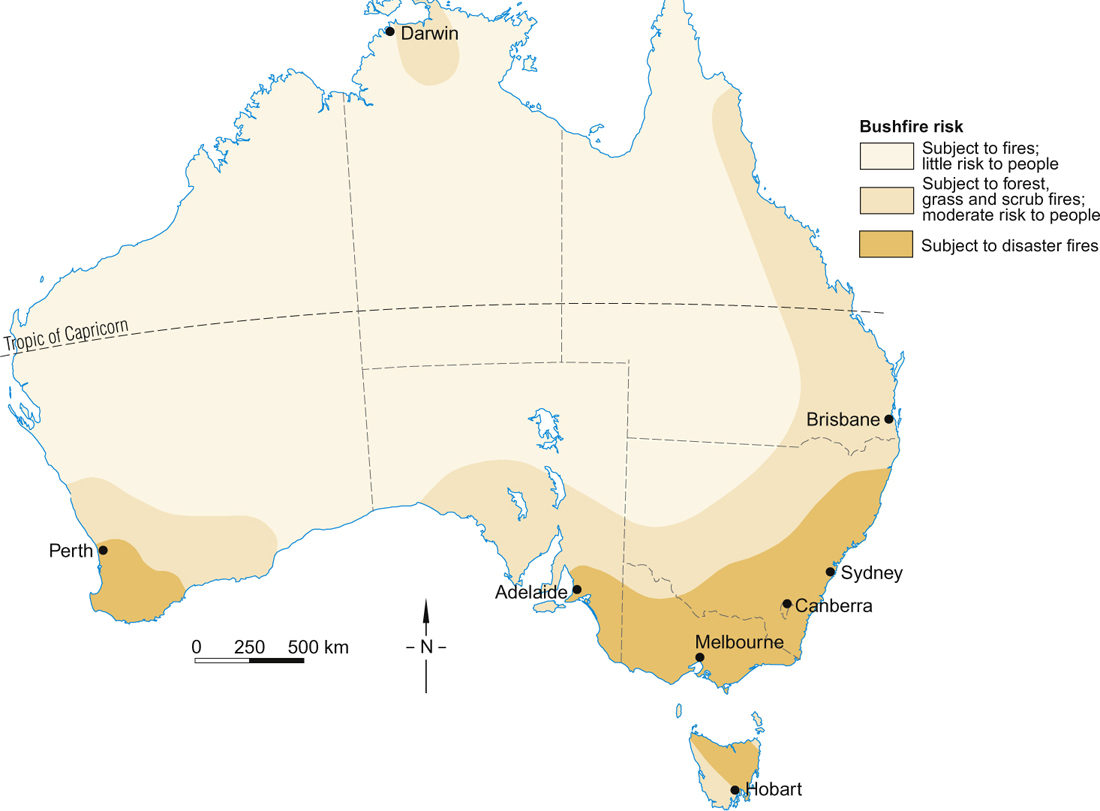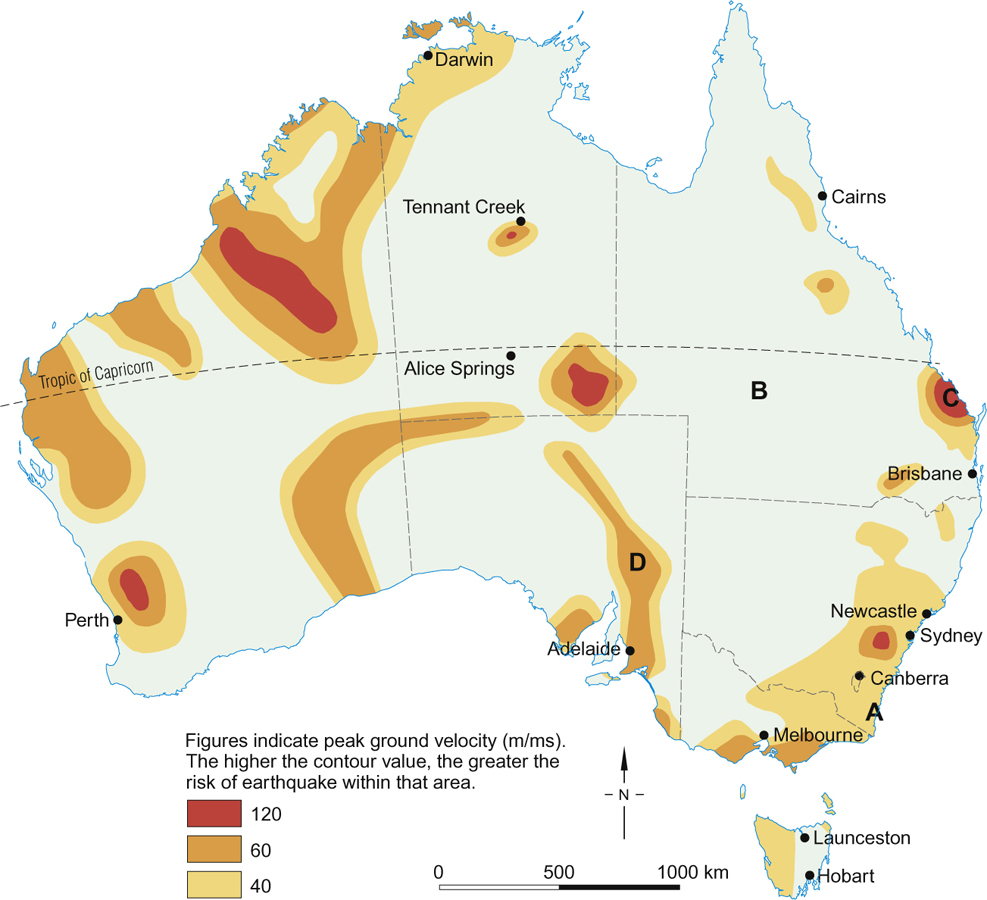Australia's Environment: Geography Quiz!
(179).jpg)
Do you know anything about the Australian environment? Do you think you can pass this quiz? The Australian environment ranges from the Antarctic territory and rainforests to damage industrial areas of major cities. Central Australia has an arid climate, and the interior has several deserts while most of the coastal areas are populated. Conservation is a real issue in Australia. This is the quiz for you if you would like to discover more about Australia’s environment.
- 1.
A continent is:
- A.
One of the five great landmasses of the earth
- B.
Separate countries which have significant areas of land
- C.
One of the seven great landmasses on the earth
- D.
One of the six great landmasses of the earth
Correct Answer
C. One of the seven great landmasses on the earthExplanation
The correct answer is "one of the seven great landmasses on the earth." This is because a continent is defined as a large, continuous landmass that is surrounded by water. There are seven continents on Earth: Africa, Antarctica, Asia, Europe, North America, Australia, and South America. Each continent is a distinct and separate landmass with its own unique geography, culture, and ecosystems.Rate this question:
-
- 2.
Which order of the continents from largest to smallest is correct?
- A.
Africa, Asia, Europe, North America, South America, Antarctica, Australia
- B.
Antarctica, Africa, Europe, Asia, South America, North America, Australia
- C.
Asia, Africa, Europe, North America, Australia, South America, Europe, Antarctica
- D.
Asia, Africa, Europe, North America, South America, Antarctica, Australia
Correct Answer
D. Asia, Africa, Europe, North America, South America, Antarctica, AustraliaExplanation
The correct order of the continents from largest to smallest is Asia, Africa, Europe, North America, South America, Antarctica, Australia.Rate this question:
-
- 3.
Which statement best describes Australia?
- A.
Australia is the smallest continent of the world extending an area of about 7682 million square kilometers
- B.
Australia is the smallest continent of the world but is a larger area than the United States of America
- C.
Australia is the second smallest continent of the world extending an area of 7862 million square kilometres
- D.
Australia is a country not a continent
Correct Answer
A. Australia is the smallest continent of the world extending an area of about 7682 million square kilometersExplanation
Australia is described as the smallest continent of the world, with an area of about 7682 million square kilometers. This means that it is smaller in size compared to other continents.Rate this question:
-
- 4.
Australia's seven external territories are:
- A.
New Caledonia; Christmas Island; Papua New Guinea; the Coral Sea Islands Territory; the Territory of Ashmore and Cartier Islands; the Australian Antarctic Territory; Heard Island and McDonald Island
- B.
Norfolk Island; Christmas Island; the Cocos (Keeling) Islands; the Coral Sea Islands Territory; the Territory of Ashmore and Cartier Islands; Solomon Islands; Heard Island and McDonald Island
- C.
Norfolk Island; Christmas Island; the Cocos (Keeling) Islands; the Coral Sea Islands Territory; the Territory of Ashmore and Cartier Islands; the Australian Antarctic Territory; Heard Island and McDonald Island
- D.
Norfolk Island; Christmas Island; the Cocos (Keeling) Islands; the Coral Sea Islands Territory; Papua New Guinea; the Australian Antarctic Territory; Heard Island and McDonald Island
Correct Answer
C. Norfolk Island; Christmas Island; the Cocos (Keeling) Islands; the Coral Sea Islands Territory; the Territory of Ashmore and Cartier Islands; the Australian Antarctic Territory; Heard Island and McDonald IslandExplanation
The correct answer is Norfolk Island; Christmas Island; the Cocos (Keeling) Islands; the Coral Sea Islands Territory; the Territory of Ashmore and Cartier Islands; the Australian Antarctic Territory; Heard Island and McDonald Island. This answer includes all seven external territories of Australia, which are Norfolk Island, Christmas Island, the Cocos (Keeling) Islands, the Coral Sea Islands Territory, the Territory of Ashmore and Cartier Islands, the Australian Antarctic Territory, and Heard Island and McDonald Island.Rate this question:
-
- 5.
Australia is located in the:
- A.
Southern Hemisphere
- B.
Eastern Hemisphere
- C.
Eastern and Western Hemisphere
- D.
Southern and Eastern Hemisphere
Correct Answer
D. Southern and Eastern HemispHereExplanation
Australia is located in the Southern and Eastern Hemisphere because it is situated below the equator, making it part of the Southern Hemisphere. Additionally, it is also positioned to the east of the Prime Meridian, which places it in the Eastern Hemisphere.Rate this question:
-
- 6.
Look at the map below, Australia is located between which latitudes and longitudes:
- A.
Latitudes 20'S and 45'S, longitudes 110'E and 155'E
- B.
Latitudes 110'E and 155'E and longitudes 20'S and 45'S
- C.
Latitudes 20'N and 45'N, longitudes 110'W and 155'W
- D.
Longitudes 20'N and 45'N, latitudes 110'W and 155'W
Correct Answer
A. Latitudes 20'S and 45'S, longitudes 110'E and 155'EExplanation
Australia is located between latitudes 20'S and 45'S, which means it is situated in the Southern Hemisphere. It is also located between longitudes 110'E and 155'E, which places it in the eastern part of the globe.Rate this question:
-
- 7.
Dreaming is the stories that describe the Dreamtime, a time in which Aboriginal people believe the Earth came to have its present form and in which life and nature began?
- A.
True
- B.
False
Correct Answer
A. TrueExplanation
Dreaming refers to the stories and beliefs of Aboriginal people about the creation of the Earth and the origins of life and nature. It is considered a sacred time in Aboriginal culture and is believed to have shaped the present form of the Earth. Therefore, the statement that dreaming describes the Dreamtime and its significance to Aboriginal people is true.Rate this question:
-
- 8.
Which is the correct order for the continent formation?
- A.
Eurasia, Pangaea, Laurasia and Gondwana, current formation
- B.
Pangaea, Eurasia, Laurasia and Gondwana, current formation
- C.
Gondwana and Laurasia, Pangaea, Eurasia, current formation
- D.
Pangaea, Laurasia and Gondwana, Eurasia, current formation
Correct Answer
D. Pangaea, Laurasia and Gondwana, Eurasia, current formationExplanation
The correct order for the continent formation is Pangaea, Laurasia and Gondwana, Eurasia, current formation. Pangaea was the supercontinent that existed around 335 million years ago and then broke apart to form two smaller continents, Laurasia and Gondwana. Laurasia was in the northern hemisphere and Gondwana was in the southern hemisphere. Over time, Laurasia and Gondwana further fragmented and eventually formed the continents we know today, including Eurasia. Therefore, the current formation of continents is a result of the breakup of Pangaea, the formation of Laurasia and Gondwana, and the subsequent formation of Eurasia.Rate this question:
-
- 9.
Australia is the lowest and the ___________________ of all the continents.
Correct Answer
flattest
smallestExplanation
Australia is considered the flattest continent because it has the lowest average elevation compared to other continents. Additionally, Australia is also the smallest continent in terms of land area.Rate this question:
- 10.
Look at the map of Australia's four major landform regions. Where are the Eastern Highlands located?
- A.
New South Wales
- B.
Inland New South Wales and Queensland
- C.
Queensland
- D.
Down the East Coast of Australia
Correct Answer
B. Inland New South Wales and QueenslandExplanation
The Eastern Highlands are located in Inland New South Wales and Queensland.Rate this question:
-
- 11.
Look at the map below of Australia's largest drainage basins and work out which Australia's largest drainage basin is:
- A.
Gulf of Carpentaria and the Timor Sea
- B.
Murray Darling Basin
- C.
North-East Coast
- D.
South- East Coast
Correct Answer
A. Gulf of Carpentaria and the Timor SeaExplanation
The correct answer is Gulf of Carpentaria and the Timor Sea. This is because the Gulf of Carpentaria and the Timor Sea are both large bodies of water located in northern Australia, and they receive water from several major rivers and tributaries. The Murray Darling Basin, North-East Coast, and South-East Coast are not drainage basins, but rather geographical regions or coastlines.Rate this question:
-
- 12.
Use the satellite image below to answer the question - Victoria is mostly:
- A.
Mountains
- B.
Desert
- C.
Forest
- D.
Combination of forest and mountains
Correct Answer
C. ForestExplanation
Based on the satellite image, the correct answer is forest. The image shows a dense and extensive coverage of vegetation, with a variety of green shades indicating the presence of trees and foliage. This suggests that Victoria is predominantly covered with a forested area.Rate this question:
-
- 13.
Using the satellite image below identifies the most significant area of desert in Australia
- A.
South-western section of Queensland
- B.
North-western section of New South Wales
- C.
North-western section of Western Australia
- D.
North-eastern section of South Australia
Correct Answer
D. North-eastern section of South AustraliaExplanation
The correct answer is the North-eastern section of South Australia. This can be determined by analyzing the satellite image provided and identifying the area that exhibits the characteristics of a desert, such as low vegetation cover and arid conditions. The North-eastern section of South Australia is known for its desert landscapes, including the Simpson Desert and the Strzelecki Desert.Rate this question:
-
- 14.
Why is the Daintree Rainforest on the World Heritage List?
- A.
It shows major changes in the Earth's evolution
- B.
It shows ongoing evolution
- C.
It has outstanding aesthetic value
- D.
It is the home of endangered species including the cassowary
- E.
All of the above
Correct Answer
E. All of the aboveExplanation
The Daintree Rainforest is on the World Heritage List because it exhibits major changes in the Earth's evolution, showcasing its ongoing evolution. Additionally, it is recognized for its outstanding aesthetic value. Moreover, the rainforest is home to endangered species, including the cassowary. Therefore, all of the above reasons contribute to its inclusion on the World Heritage List.Rate this question:
-
- 15.
Topographic maps are used to:
- A.
Find location, direction and distance, describe the distribution of physical and human features
- B.
Show interrelationships between features such as landforms and settlement patterns
- C.
Show high and low pressure systems
- D.
A and B
- E.
A, B and C
Correct Answer
D. A and BExplanation
Topographic maps are used to find location, direction, and distance, as well as describe the distribution of physical and human features. They also show the interrelationships between features such as landforms and settlement patterns. Therefore, the correct answer is A and B.Rate this question:
-
- 16.
Look at the map below. What is the grid reference of Mt Florence?
- A.
GR835486
- B.
GR476835
- C.
GR8348
- D.
GR4383
Correct Answer
A. GR835486Explanation
The grid reference of Mt Florence is GR835486.Rate this question:
-
- 17.
What is the area reference of the railway station?
- A.
AR4086
- B.
AR8640
- C.
AR863408
- D.
AR408863
Correct Answer
B. AR8640Explanation
The correct answer is AR8640.Rate this question:
-
- 18.
What is the direction from G to D?
- A.
South
- B.
East
- C.
West
- D.
North
Correct Answer
C. WestExplanation
The direction from G to D is west. This means that if you are standing at point G and facing towards point D, you would be facing west.Rate this question:
-
- 19.
The main reason Australia is so dry is that much of the continent lies in an area dominated by ______________ pressure for most of the year.
Correct Answer
highExplanation
Australia is so dry because much of the continent lies in an area dominated by high pressure for most of the year. High pressure systems are associated with sinking air, which inhibits the formation of clouds and precipitation. This leads to dry conditions and limited rainfall in Australia.Rate this question:
- 20.
Look at the graph. What is Australia's average annual rainfall (mm)
- A.
450mm
- B.
400mm
- C.
300mm
- D.
500mm
Correct Answer
A. 450mmExplanation
Based on the graph, the average annual rainfall for Australia is 450mm. This is determined by looking at the point on the graph that corresponds to Australia and identifying the value on the y-axis, which represents the average annual rainfall in millimeters.Rate this question:
-
- 21.
Climate change will affect Australia's:
- A.
Natural environments and water supply
- B.
Health
- C.
Agriculture and industry
- D.
Tourism
- E.
All of the above
Correct Answer
E. All of the aboveExplanation
Climate change is a global issue that will have wide-ranging impacts on various aspects of Australia. Natural environments and water supply will be affected as rising temperatures and changing rainfall patterns can lead to habitat loss, increased droughts, and reduced water availability. Health will also be impacted as extreme weather events and changing disease patterns can pose risks to public health. Agriculture and industry will face challenges due to changes in temperature, precipitation, and increased frequency of extreme events, affecting food production and economic activities. Additionally, tourism will be affected as changing landscapes and weather patterns may alter visitor experiences. Therefore, all of the above options will be influenced by climate change in Australia.Rate this question:
-
- 22.
Look at the map below. Which statement is true?
- A.
B is a high pressure system
- B.
A is a high pressure system
- C.
A and B are both low pressure systems
- D.
A and B are both high pressure systems
Correct Answer
B. A is a high pressure systemExplanation
Based on the given map, it can be observed that point A is located in an area where the isobars are closely spaced, indicating a high pressure system. Therefore, the statement "A is a high pressure system" is true.Rate this question:
-
- 23.
Australia has a greater value of natural resources per head of population than any other country in the world?
- A.
True
- B.
False
Correct Answer
A. TrueExplanation
Australia is known for its abundant natural resources, including minerals, energy resources, and agricultural land. With a relatively small population, this means that there is a greater value of natural resources per person compared to other countries. This is due to factors such as the country's vast land area, diverse geology, and rich biodiversity. Therefore, it can be concluded that Australia does indeed have a greater value of natural resources per head of population than any other country in the world.Rate this question:
-
- 24.
The main reason Australia has a wide variety of unusual plant and animal life is due to:
- A.
Significant introduction of plants and animals from overseas
- B.
Low rainfall
- C.
Geographic isolation
- D.
All of the above
Correct Answer
C. GeograpHic isolationExplanation
Australia's wide variety of unusual plant and animal life can be attributed to its geographic isolation. Being separated from other land masses for millions of years, Australia has developed unique ecosystems and species that have evolved in isolation. This isolation has allowed for the development of distinct adaptations and biodiversity that are not found elsewhere. The introduction of plants and animals from overseas and low rainfall may have some influence, but the primary reason for Australia's unique flora and fauna is its geographic isolation.Rate this question:
-
- 25.
An ecosystem is a system formed by the interactions between _________ organisms and physical elements of the environment.
Correct Answer
livingExplanation
An ecosystem is a system formed by the interactions between living organisms and physical elements of the environment. This means that the organisms, such as plants and animals, interact with the non-living components of the environment, such as air, water, and soil. These interactions are essential for the functioning of the ecosystem, as they influence the flow of energy and nutrients within it. The living organisms rely on the physical elements of the environment for survival, and in turn, they also have an impact on these elements through their activities and behaviors.Rate this question:
- 26.
There are four types of Natural Hazards: atmospheric, hydrological, geological and___________
Correct Answer
Biological
disease
plagueExplanation
The correct answer is "Biological". The question asks for the missing type of natural hazard, and the options provided are "Biological", "disease", and "plague". Among these options, "Biological" is the correct answer as it fits the category of natural hazards and completes the list of four types of natural hazards: atmospheric, hydrological, geological, and biological. "Disease" and "plague" are not types of natural hazards but can be considered as consequences or outcomes of biological hazards.Rate this question:
- 27.
Managing hazards requires individuals, communities, and governments to ___________ for hazards, prevent hazards, and recognize and respond to hazards quickly.
Correct Answer
prepare
get ready
planExplanation
To effectively manage hazards, individuals, communities, and governments need to be proactive and take necessary steps to prepare for potential hazards. This involves developing plans and strategies to mitigate risks, ensuring that resources and infrastructure are in place, and educating and training people to respond effectively in case of emergencies. By preparing, getting ready, and planning ahead, they can minimize the impact of hazards and respond swiftly when they occur.Rate this question:
- 28.
A drought is:
- A.
Low rainfall
- B.
Dry weather
- C.
Prolonged period of below average rainfall and dry weather
- D.
Prolonged period of below average rainfall
Correct Answer
C. Prolonged period of below average rainfall and dry weatherExplanation
A drought is defined as a prolonged period of below average rainfall and dry weather. This means that during a drought, there is a significant lack of rainfall and the weather remains dry for an extended period of time. This combination of below average rainfall and dry conditions can have severe effects on agriculture, water resources, and the overall ecosystem.Rate this question:
-
- 29.
The main cause of drought in Eastern Australia is:
- A.
El Nino
- B.
La Nina
Correct Answer
A. El NinoExplanation
El Nino is the correct answer because it is a climate pattern characterized by warmer than average ocean temperatures in the equatorial Pacific, which leads to reduced rainfall in eastern Australia. During El Nino events, the trade winds weaken, causing a decrease in the upwelling of cold, nutrient-rich waters along the coast of South America. This disrupts the normal weather patterns, resulting in less rainfall in eastern Australia and contributing to drought conditions.Rate this question:
-
- 30.
Two main types of bushfires are:
- A.
Surface and crown bushfires
- B.
Surface and ground bushfires
- C.
Crown and ground bushfires
- D.
Surface and firestorm bushfires
Correct Answer
A. Surface and crown bushfiresExplanation
The correct answer is surface and crown bushfires. Surface bushfires refer to fires that burn along the ground, fueled by grass, shrubs, and low-lying vegetation. Crown bushfires, on the other hand, occur when the fire spreads to the upper levels of trees, burning through the canopy. This distinction is important as crown fires are typically more intense and difficult to control compared to surface fires.Rate this question:
-
- 31.
Look at the map below. Which statement best describes the risk of bushfires in Australia?
- A.
The majority of Australia is subject to disaster fires
- B.
The majority of Australia is subject to fires; little risk to people
- C.
The majority of Australia is subject to forest, grass and scrub fires; moderate risk to people
- D.
The minority of Australia is subject to fires; little risk to people
Correct Answer
B. The majority of Australia is subject to fires; little risk to peopleExplanation
The correct answer states that the majority of Australia is subject to fires, but there is little risk to people. This means that while fires are common in Australia, they are typically not a significant danger to human populations.Rate this question:
-
- 32.
The most common natural disaster in Australia is:
- A.
Storms
- B.
Tropical cyclones
- C.
Floods
- D.
Bushfires
Correct Answer
D. BushfiresExplanation
Bushfires are the most common natural disaster in Australia due to the country's hot and dry climate, which creates ideal conditions for wildfires to occur. These fires are often caused by lightning strikes or human activities, such as arson or negligence. The dry vegetation, strong winds, and high temperatures further contribute to the spread and intensity of bushfires. Australia's unique flora and fauna are highly adapted to fire, and some plant species even rely on it for their regeneration. The frequency and severity of bushfires have increased in recent years, posing significant threats to lives, property, and the environment.Rate this question:
-
- 33.
Bushfires are caused by:
- A.
Heatwaves, low rainfall, strong winds, high humidity, topography, human factors
- B.
Heatwaves, low rainfall, strong winds, low humidity, human factors
- C.
Heatwaves, low rainfall, strong winds, low humidity, topography, human factors
- D.
Heatwaves, low rainfall, strong winds, low humidity, topography
Correct Answer
C. Heatwaves, low rainfall, strong winds, low humidity, topograpHy, human factorsExplanation
Bushfires are caused by a combination of factors including heatwaves, low rainfall, strong winds, low humidity, topography, and human factors. Heatwaves create dry and hot conditions that can easily ignite vegetation, while low rainfall leads to drier fuel sources. Strong winds can spread the fire quickly and make it difficult to control. Low humidity also contributes to dry conditions and increases the risk of fire. Topography plays a role as it can influence the speed and direction of the fire. Finally, human factors such as arson, negligence, or accidental ignition can also lead to bushfires.Rate this question:
-
- 34.
The main types of storms are thunderstorms, ________________, cold fronts and tornadoes.
Correct Answer
tropical cyclones
cyclonesExplanation
The main types of storms mentioned in the question are thunderstorms, tropical cyclones, cold fronts, and tornadoes. The correct answer provided includes both tropical cyclones and cyclones, which are two different terms used to describe the same type of storm. Tropical cyclones are intense low-pressure systems that form over warm tropical oceans, characterized by strong winds and heavy rainfall. Cyclones, on the other hand, are large-scale weather systems with low-pressure centers and rotating winds. Therefore, both terms refer to the same type of storm, making the answer correct.Rate this question:
- 35.
This satellite image shows a _____________________ over the tip of Queensland.
Correct Answer
tropical cyclone
cycloneExplanation
The satellite image shows a tropical cyclone or cyclone over the tip of Queensland. A tropical cyclone is a type of storm system characterized by low pressure at its center and rotating winds. It typically forms over warm ocean waters and can cause strong winds, heavy rainfall, and storm surges. Cyclone is another term used to describe a tropical cyclone. The image is likely showing a weather system with these characteristics occurring over the mentioned location in Queensland.Rate this question:
- 36.
Which of the following causes the greatest risk of property damage and loss of life?
- A.
Flash floods
- B.
Slow-onset floods
- C.
Rapid onset floods
Correct Answer
A. Flash floodsExplanation
Flash floods cause the greatest risk of property damage and loss of life compared to slow-onset floods and rapid onset floods. Flash floods occur suddenly and with little warning, often as a result of heavy rainfall or a dam break. They can rapidly inundate areas, overwhelming infrastructure and trapping people in dangerous situations. The swift and powerful nature of flash floods makes them particularly dangerous, leading to a higher potential for property damage and loss of life.Rate this question:
-
- 37.
Look at the map. Select the correct order of the locations A, B,C, D from highest to lowest earthquake risk.
- A.
C,A,D,B
- B.
D,C,A,B
- C.
B,A,D,C
- D.
C,D,A,B
Correct Answer
D. C,D,A,BExplanation
The correct order of the locations from highest to lowest earthquake risk is C, D, A, B. This is because location C is listed first, indicating that it has the highest earthquake risk. Location D is listed second, suggesting that it has a lower earthquake risk than C but higher than the remaining locations. Location A is listed third, indicating a lower earthquake risk than both C and D but higher than location B, which is listed last.Rate this question:
-
- 38.
The area where the greatest amount of damage is caused by an earthquake is called the ________________
Correct Answer
epicentre
epecentre
epycentreExplanation
The correct answer is "epicentre". The epicentre refers to the point on the Earth's surface directly above the focus (or hypocenter) of an earthquake. It is the location where the earthquake's energy is released most intensely, resulting in the greatest amount of damage.Rate this question:
Quiz Review Timeline +
Our quizzes are rigorously reviewed, monitored and continuously updated by our expert board to maintain accuracy, relevance, and timeliness.
-
Current Version
-
Mar 21, 2023Quiz Edited by
ProProfs Editorial Team -
Apr 13, 2010Quiz Created by
Rebeccafr
 Back to top
Back to top










